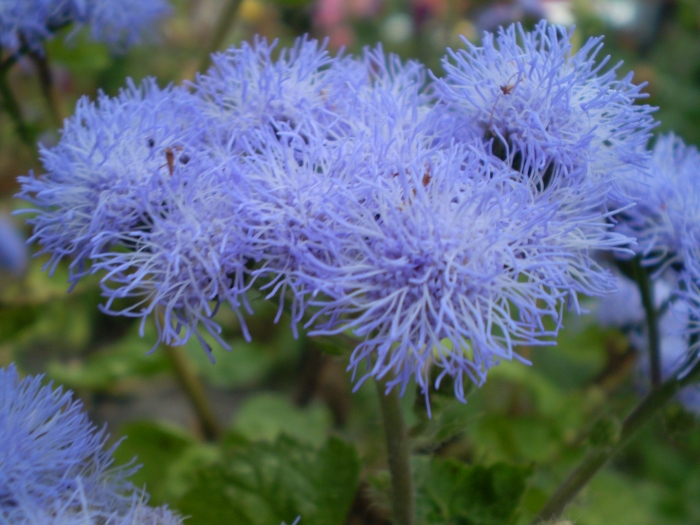Bluemink
(Ageratum houstonianum)
Bluemink (Ageratum houstonianum)
/
/

Rob Hille
Public domain
Image By:
Rob Hille
Recorded By:
Copyright:
Public domain
Copyright Notice:
Photo by: Rob Hille | License Type: Public domain | License URL: https://creativecommons.org/public-domain/ | Uploader: Rob Hille | Publisher: Wikimedia Commons | Title: Ageratum_houstonianum_2.1_R.jpg | Notes: {{Information |Description ={{en|1=[[:en:Akebia quinata|Akebia quinata]] in [[:en:Mount Ibuki|Mount Ibuki]]}} {{ja|1=[[:ja:アケビ|アケビ]] [[:ja:伊吹山|伊吹山]]にて}} |Source ={{Own}} |Author =alpsdake |Date =2 |

























































































Estimated Native Range
Summary
Ageratum houstonianum, commonly known as Bluemink, is an annual herb that can behave as a perennial in its native range, which includes open woodlands and scrub areas in Central America and Mexico. It is often grown as a cool-season annual plant in gardens, reaching heights of 0.3–1 m (1 ft 0 in – 3 ft 3 in) with ovate to triangular leaves that are 2–7 cm (0.79–2.76 in) long. The plant is notable for its showy blue flowerheads, which can also be white, pink, or purple, and the fluffy, threadlike appearance of the ray flowers, which bloom from May to November in the northern hemisphere. Bluemink is particularly attractive to butterflies and adds a splash of color to garden settings.
Bluemink is widely appreciated for its long flowering season and is commonly used in summer borders, balcony boxes, and as cut flowers for high varieties. It thrives in full sun to part shade and prefers moist, well-drained soils. While it is relatively low-maintenance, it can suffer from powdery mildew and should not be overwatered. Ageratum houstonianum has numerous cultivars with flower colors ranging from dark blue to purple, pink, and white. However, it is potentially invasive outside its native range, so gardeners should check local regulations before planting.CC BY-SA 4.0
Bluemink is widely appreciated for its long flowering season and is commonly used in summer borders, balcony boxes, and as cut flowers for high varieties. It thrives in full sun to part shade and prefers moist, well-drained soils. While it is relatively low-maintenance, it can suffer from powdery mildew and should not be overwatered. Ageratum houstonianum has numerous cultivars with flower colors ranging from dark blue to purple, pink, and white. However, it is potentially invasive outside its native range, so gardeners should check local regulations before planting.CC BY-SA 4.0
Plant Description
- Plant Type: Herb
- Height: 0.5-2.5 feet
- Width: 0.5-1.5 feet
- Growth Rate: Moderate
- Flower Color: Blue, Pink, Purple, White
- Flowering Season: Summer, Fall
- Leaf Retention:
Growth Requirements
- Sun: Full Sun, Part Shade
- Water: Medium
- Drainage: Slow, Medium, Fast
Common Uses
Bee Garden, Border Plant, Butterfly Garden, Deer Resistant, Groundcover, Potted Plant, Showy Flowers
Natural Habitat
Open woodlands and scrub areas in Central America and Mexico
Other Names
Common Names: Ageratum, Blue Billygoat Weed, Blue Mink, Mexican Paintbrush, Pussy Foot, Floss Flower, Mexican Ageratum, Flossflower, Blue Billygoat-Weed, Mexikaanse Ageratum
Scientific Names: , Ageratum houstonianum, Ageratum mexicanum, Alomia pinetorum, Ageratum conyzoides var. mexicanum, Ageratum houstonianum f. houstonianum, Ageratum houstonianum f. niveum, Ageratum wendlandii, Ageratum houstonianum f. luteum, Ageratum houstonianum var. isochroum
GBIF Accepted Name: Ageratum houstonianum Mill.